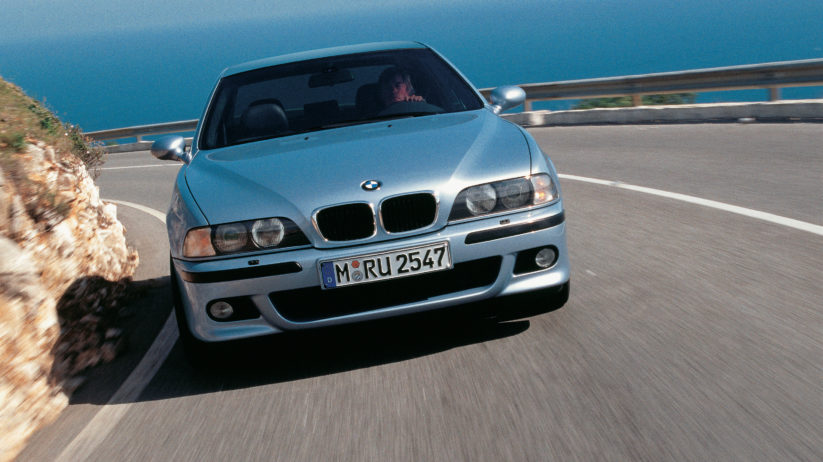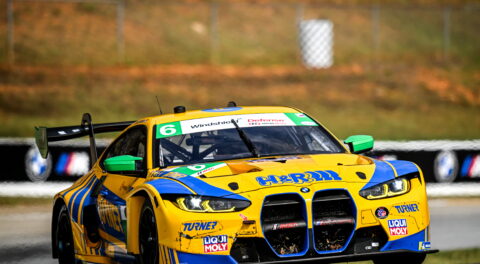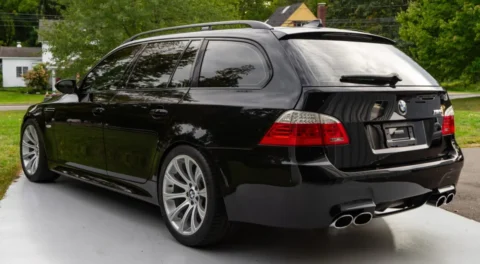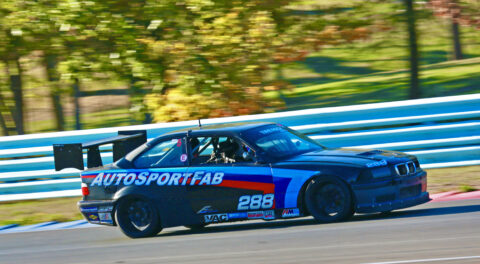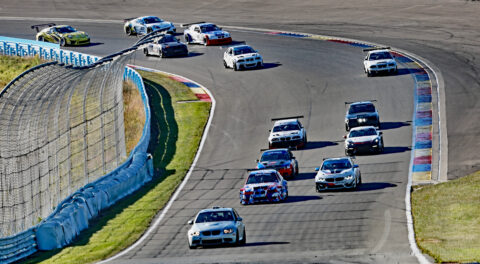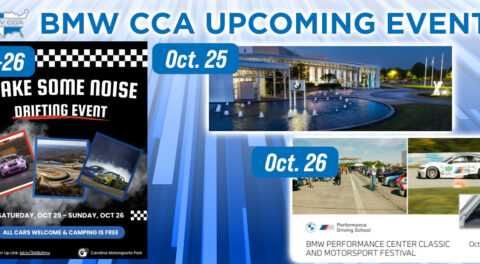Before the days of turbocharged, direct-injected engines becoming the standard, ushered in by ever-stringent emissions standards and then proven by their ability to provide near lag-less, linear power, BMW created some of the most razor-sharp atmospheric engines ever fitted to production road cars. It’s safe to say that this integral core competency played a large role in the automaker rising to prominence with practical yet sporty and high-revving cars decades before the E46 M3 was released, and to this day, enthusiasts of the marque remain fondly reminiscent of these models and the engines that give them their personality.
And there are good reasons the models and engines appear to be achieving a place of ensconced remembrance and preservation going forward. Many of the individual models and engine designs we’re going to highlight below exhibited game-changing technology when new that’s still remarkable today, and some of the finite aspects of their performance, capability and technical design are unlikely to ever be repeated again. As the years wear on and we move further away from the final production dates of these special machines, it’s good to take a look back and appreciate a handful of models that helped make BMW what it is today.
10. E60 & E61 M5 / E63 M6
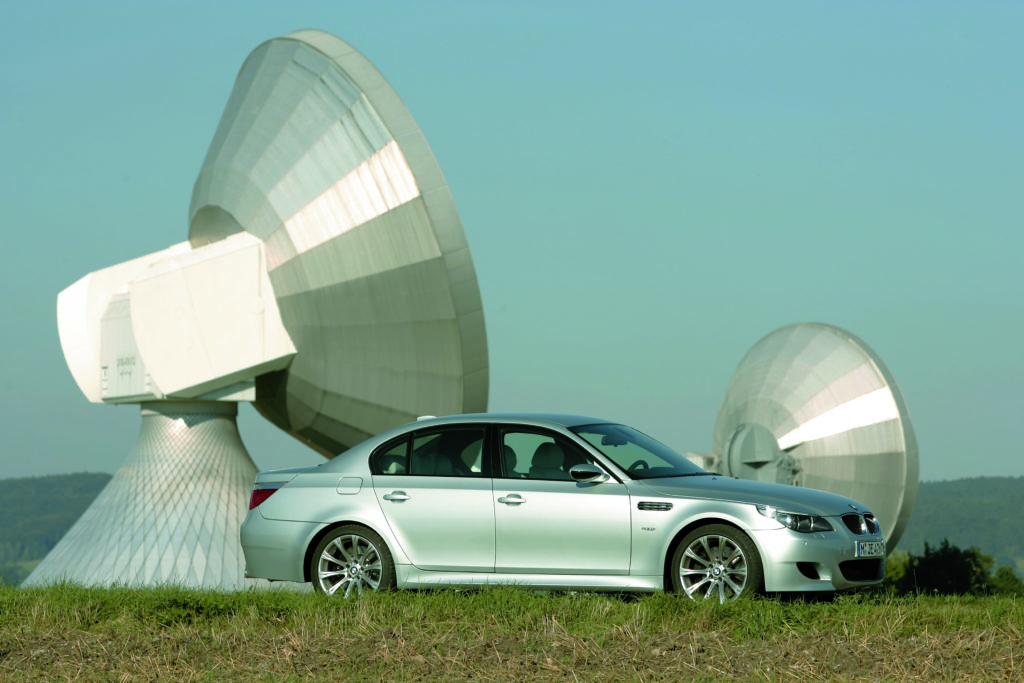
The E60 M5 and other M models that shared its powertrain and underlying componentry came to market with an engine that was nothing short of otherworldly in terms of technology and how high it could rev. The S85 was inspired by BMW’s previous involvement in F1 which was enjoying the V10 era during this time. Although larger than it’s predecessor and with controversial styling, the E60 M5 offers performance that remains impressive today, with a delimited top speed north of 200 mph. Active chassis and suspension controls help the mid-size executive super sedan shrink in terms of feel and handling at speed or when maneuvering through a parking lot, and the interior offers opulent luxury that’s aged nicely along with plenty of room for rear passengers and all of their belongings.
The S85B50 V10 used in the E60 M5 and stablemate M6 has a stratospherically high redline of 8,250 rpm reminiscent of era F1 power plants, and produced a sound unlike any other production BMW engine or V10 from another manufacturer. The underlying design features strong influence from the S62B50 V8, and further develops the use of double VANOS and individual throttle bodies. Other technology referred to as the ionic current measuring system eliminated the use of knock sensors, via passing a low voltage pulse across the spark plugs immediately following the ignition spark to get an idea of combustion chamber conditions. Lubrication is also handled by a semi-dry sump design with additional electrical scavenge pumps, and pistons are manufactured by Mahle Motorsport. The S85 upholds BMW’s lofted claims of naturally aspirated engines that break the 100 hp per liter threshold, and produces 500 hp at 7,750 rpm with 384 lb. ft. of torque peaking at 6,100.
9. E82 128i
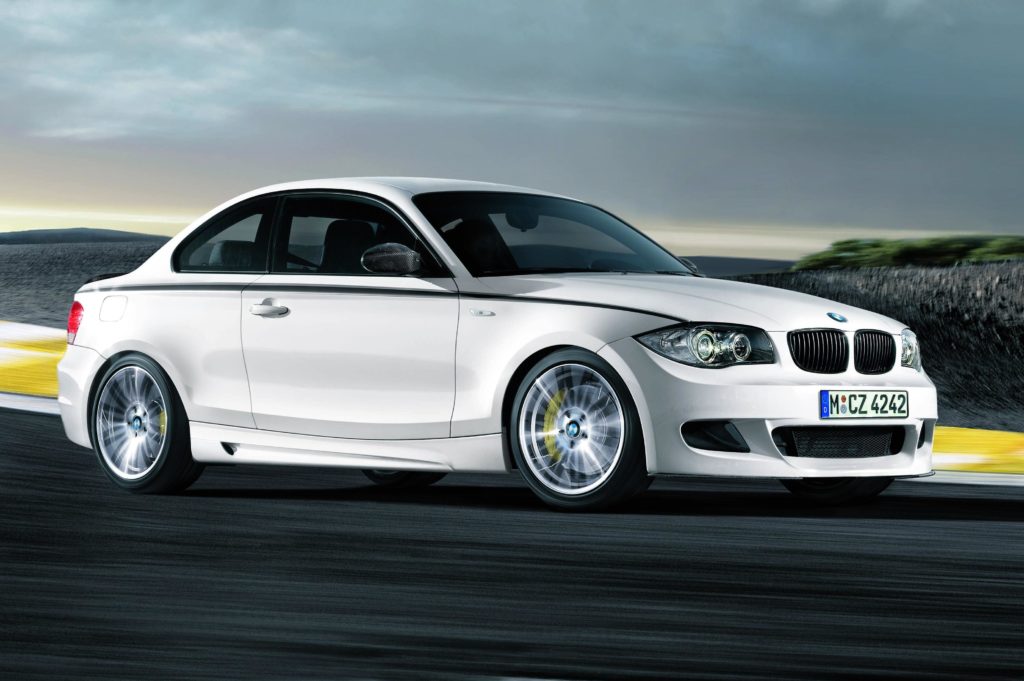
The E82 128i coupe was available in the U.S. starting with the 2008 model year with sales ending in 2013 when the platform ceased production. Although the model remains rather under-the-radar to most, when properly equipped, the 128i easily earns its place on this list among other top modern naturally aspirated BMWs. Like it’s significantly more powerful stablemates that include the 1 Series M Coupe and the 135i, the 128i has a wheelbase among the shortest offered in recent marque history, and the platform seems exceptionally well suited to the linear power band of the naturally aspirated N52B30 (or N51 SULEV) engines. Although most default to considering one of the turbocharged models, the 128i has been described as a spiritual successor to more than a few other special BMWs of the past like the E36 M3 and even the 2002.
When it comes to the 128i, it’s all about getting the equipment right. The vast majority were sold in rather unexciting six-speed automatic, comfort seat spec, and that includes almost all convertibles. There are a fair number of properly ordered unicorns out there though, and the model itself has an enthusiast following that only seems to be growing as the model has aged. When it comes to getting the right one, a manual transmission to make the most of the refined NA straight-six is necessary, while Sport or M Sport packages are also good criteria to stick to, as they include improved suspension, wheel and tire setups, along with the correct seats.
The N52B30 (or N51 SULEV in places like California and elsewhere) uses impressive technology like double VANOS camshaft phasing along with a variable geometry intake. These motors also respond well to light tuning and other parts bin modifications, and hearing about someone doing a build that mirrors a European-spec 130i isn’t unheard of. Factory rated output was 230 hp at 6,500 rpm with 200 lb. ft. of torque arriving at 2,750.
8. E34 M5
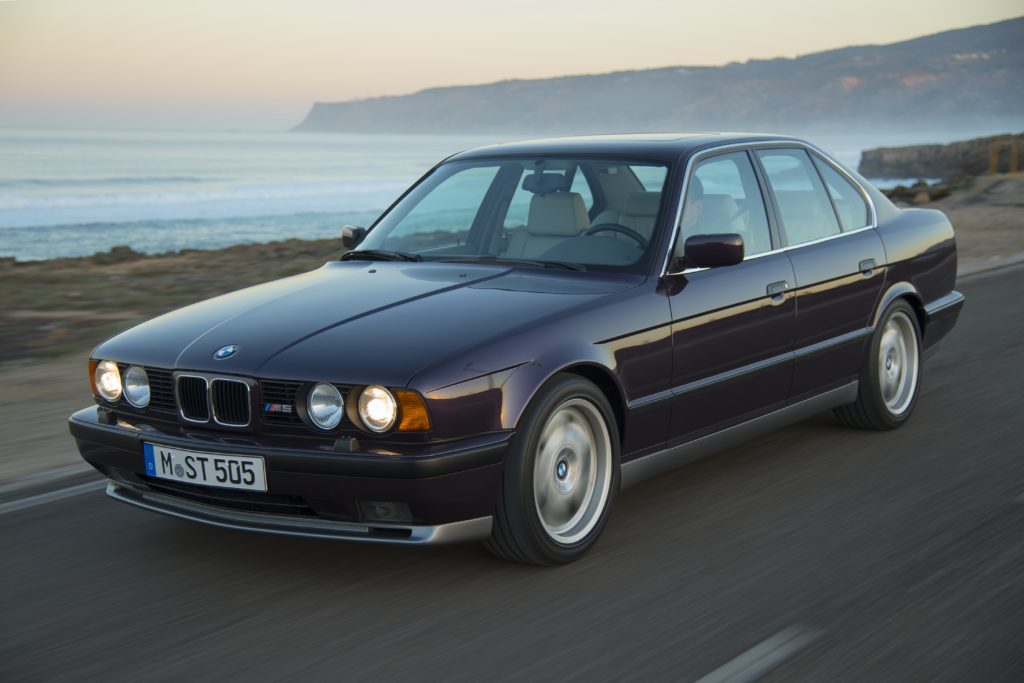
The E34 M5 began production during the late 1980’s, but came into it’s own through evolutionary refinement during the final few model years and wasn’t sold in the U.S. until the early 1990s. While the platform itself along with other contemporaries were helping to usher in a new era for BMW, the S38 power plant of the M5 uses a race-proven design from a few decades back which was reaching it’s pinnacle around this time. When fitted to the E34 chassis, which offered significant improvements in the ways of rigidity and refinement over its predecessors, an autobahn thoroughbred with strong balance and handling was born.
In the U.S., the E34 M5 used the S38B36 24-valve twin-cam inline six which has displacement just above the previous B35 version that powered the E28 M5, E24 M6 and Euro-spec M635CSi. Other improvements over it’s lineage of predecessors that also includes the M88 and original M49 from the 3.0 CSI include stainless steel single-length headers, advanced Bosch engine management and a variable length intake manifold. U.S. versions developed 310 hp and 266 lb. ft. of torque.
Just after sales began in the U.S., customers in other markets were treated to the new S38B38 engine. In addition to increased displacement, other changes included the most current Bosch Motronic engine management system, coil-on-plug ignition, lighter pistons, shorter connecting rods and larger cylinder head intake and exhaust valves. Other sources indicate that the exhaust manifold used Inconel, just like the McLaren F1. In May of 1994, just over a year before production would end, a Getrag six-speed manual replaced the previous five-speed. Factory rated output was 347 hp at 6,900 rpm with 295 lb. ft. of torque at 4,750.
7. E36 M3
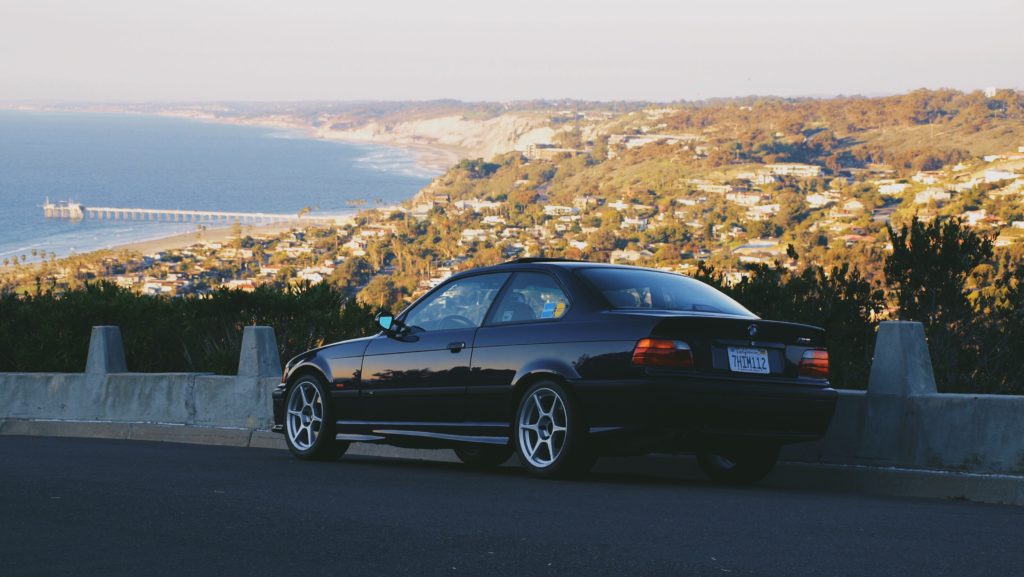
Unlike other M cars before and after, the E36 M3 shares every one of its body panels with the standard 3 Series. Aero including bumpers, side skirts and optional wings help to set them apart visually, but it’s the happenings beneath the skin that are most important when it comes to recognizing the special nature of the second generation M3. U.S. market versions are continually lauded for their excellent handling and balance, which to some are among the best of the breed. The model is often maligned for it’s power plant though, which is among the first M-Tuned engines initially based on a standard production design as opposed to the rest-of-world spec version which used individual throttle bodies. But let’s not forget that Car & Driver tested the two when new and declared that there was very little in terms of a tangible performance difference, while the decades since have proven the S50B30US and S52B32 engines to be among enthusiasts favorites, thanks to excellent torque, great potential for bolt-on modification and overall low running costs.
1995 model year U.S.-spec M3s were sold with the one-year-only S50B30US engine, which now offers the distinct advantage of using the older OBD1 system, enabling a greater range of modification and potential for swaps. Based upon the M50B25TU, VANOS is employed for the intake camshaft exclusively, and factory advertised output was 240 hp at 6,000 rpm with 225 lb. ft. of torque peaking at 4,250—190 lb. ft. are available from a mere 2,400 revs though, which is one reason why these engines can still manage to shine against European versions which must be revved much further. 1997 through 1999 saw the use of the S52B32 which offered increased displacement for original output of 240 hp at 6,000 rpm with 240 lb. ft. of torque arriving at 3,800.
6. Z3 M Coupe & Roadster
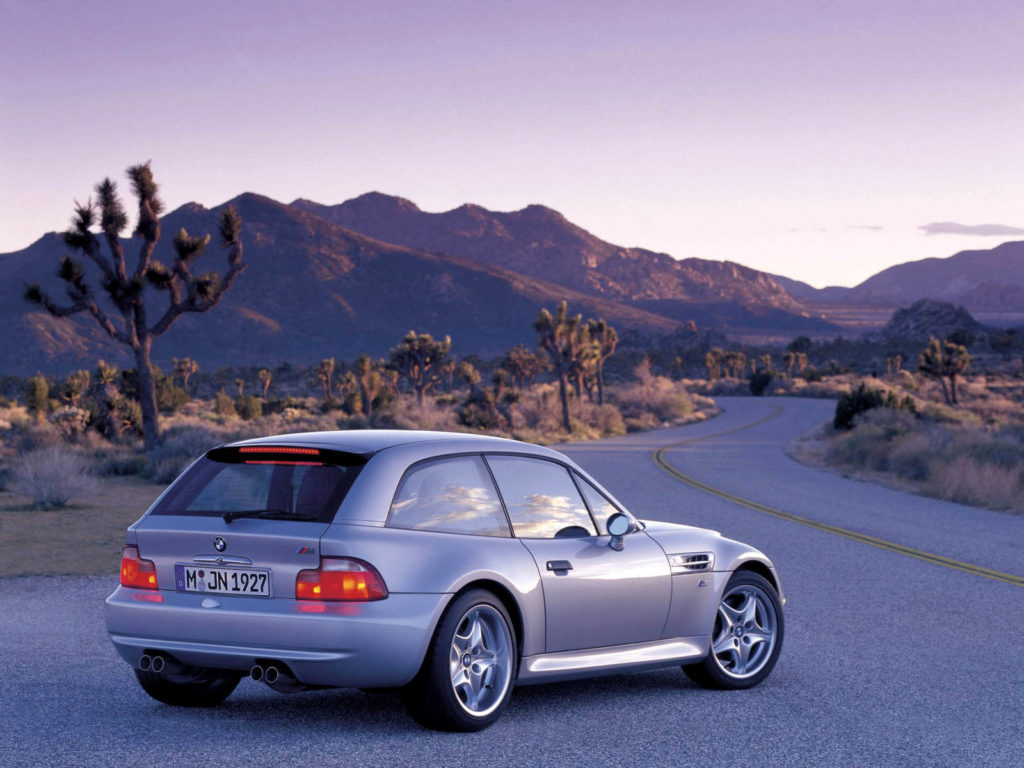
Built atop a platform that uses components from the E36 in the front and the E30 in the rear with an interior that is among the most unique ever offered by the brand, the Z3 M Coupe and Roadster are parts bin creations that have achieved a special status in the modern classic BMW lineup. Manufactured for a handful of years straddling the start of the new millennium, the Z3 M used power from two distinctly different engines, but values of the model as a whole have experienced a significant increase over the past few years, with the nicest examples now fetching impressive sums. Styling and interior space are not for everyone, but the unique design and unadulterated driving dynamics have proven themselves to be a very enticing combination.
Produced from 1998 until 2002, the Z3 M coupe and Roadster were initially equipped with the same S52B23 engine as the E36 M3 until after the start of the new millennium. Power figures for these early cars were unchanged when compared to the M3, with 240 hp at 6,000 rpm with 240 lb. ft. of torque at 3,800. Model years 2001 and 2002 are the most sought after variants, thanks to the use of the S54B32 engine from the then-new E46 M3. Output was detuned slightly for the Z3 and a bit more for the U.S., with factory rated figures of 315 hp at 7,900 rpm and 252 lb. ft. of torque at 4,900.
5. E39 M5
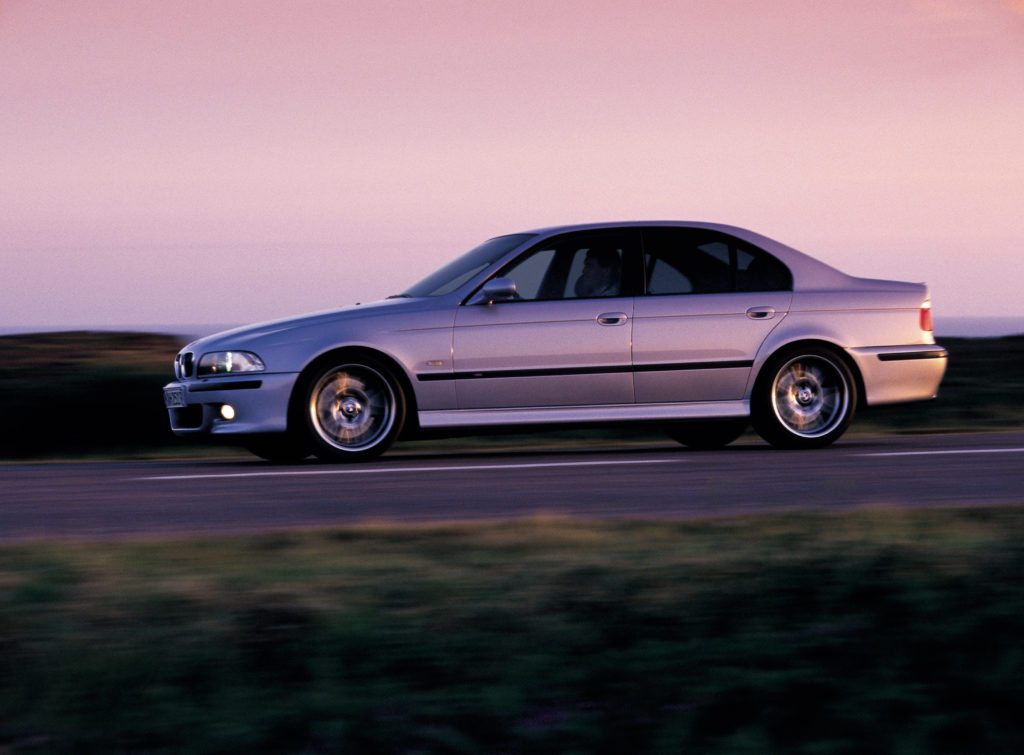
Although all M5 generations are great performers each with their own unique personality, it was the V8-powered E39 M5 that shifted BMW M into another realm of competition. Using technology like individual throttle bodies and double-VANOS that had previously only been featured on the E36 M3 and McLaren F1, the E39 M5 combined world class luxury in a sporting package with better driving dynamics than any era competitor. The third-generation M5 was one of those cars that transcended brand loyalty, becoming a household name to a greater degree than almost any other previous model. The market has been quite kind as well, with nicely kept examples in preferable color combinations appreciating substantially over the past few years.
The S62B50 quad-cam 32-valve engine of the E39 M5 was the first BMW V8 to feature variable camshaft phasing for both intake and exhaust (double VANOS) and uses individual throttle bodies that are electronically actuated. Other high tech features include a semi-dry sump oil system with scavenging pumps for hard cornering, while the redline is an impressive 7,000 rpm. Original output for the 4.9-liter engine is 394 hp at 6,600 rpm with 369 lb. ft. of torque at 3,800. This power plant would help to usher in what’s referred to as one of the golden ages for BMW M engines, with favored examples like the S85 V10 and S65 V8 following, while the S54 was manufacturing during the same period as well, just before the era of turbocharging and direct injection came about. The S62 would also gone to see continued use in racing long after the E39 ceased production.
4. E52 Z8
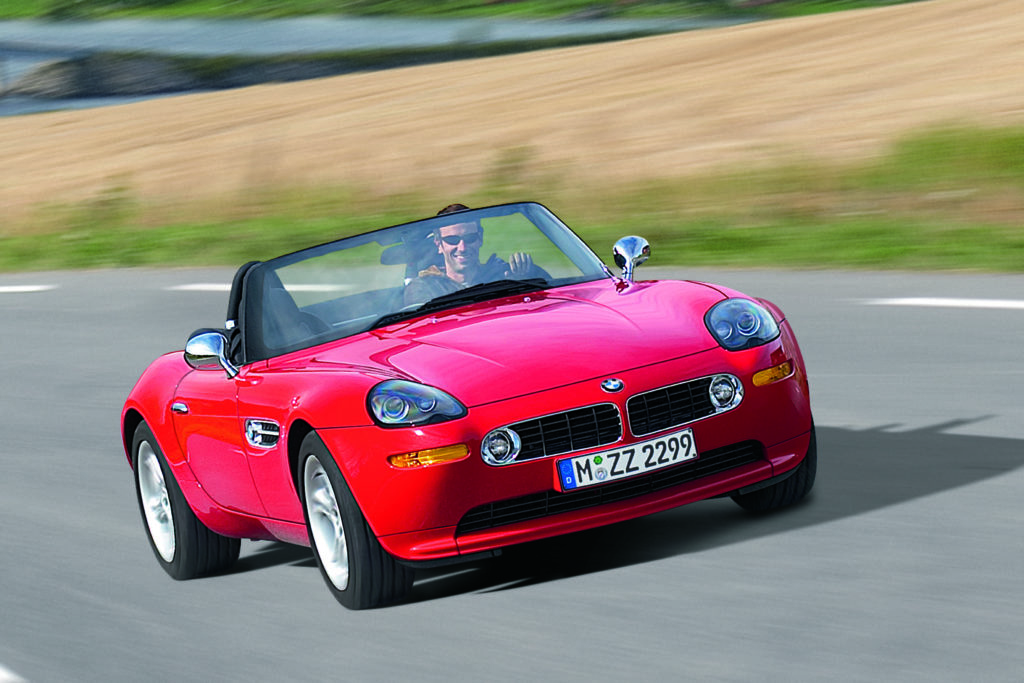
The Z8 ranks highly not only among exulted BMWs, but also among the celebrated greats of automotive culture as a whole. They don’t provide the same visceral thrills as other more hardcore cars on this list, but the driving experience is among the most unique and memorable of any modern vehicle. Powered by the same fire-breathing V8 of the E39 M5 with the same factory rated output, gearing and the exhaust are vastly different while design is unlike anything else in the contemporary lineup. Styling clearly harkens back to the aluminum V8-powered 507, and like other limited-production specials, construction of the vastly aluminum body and underpinnings was done by hand in small numbers.
Applying the accelerator to the floor with the sport button pushed doesn’t result in the same rear tire smoke show as the E39 M5 thanks to more relaxed, grand touring-oriented drivetrain ratios. But when exiting a corner or cruising on the freeway, the speed still builds with ferocious enthusiasm—keep your eye on the speedometer, because even with the top down, the triple-digit figures arrive quickly and without the typical wind-blown warnings. The exhaust is something special all on its own as well. Said to have been crafted with the 507 and other era competitors like the Corvette in mind, the personality is a multifaceted one, with a docile nature befitting of the finest concours lawns (ahem, fairways) at idle or low rpm. Open the eight throttle bodies in regular or sport mode, however, and the beast wakes up with growls that fall somewhere in between the modern V8 producing them and the pushrod American V8s of the 1950s.
3. Z4 M
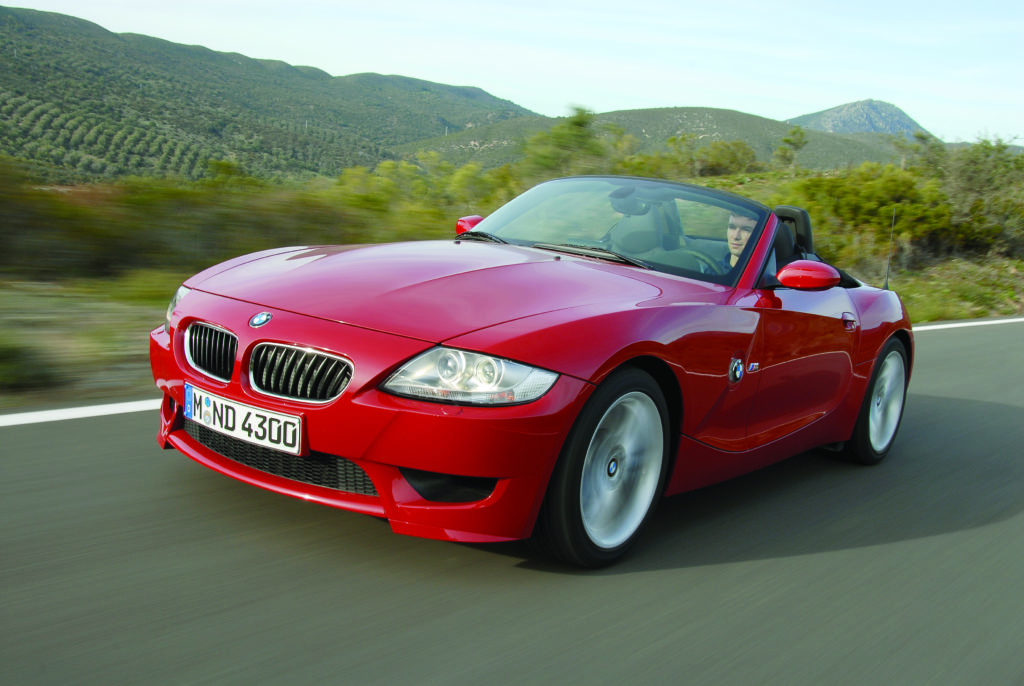
The E85 Z4 M has yet to experience the same kind of renaissance as it’s predecessor, but that’s largely due to a second-hand market that has always remained quite strong. Beyond the engine and unique styling that seems to be aging well for the most part, the Z4 M Coupe or Roadster offer one of the most direct and dialed-in driving experiences of any BMW. Even greats like the E30 M3, E36 M3 and Z3 M have a tough time matching the special blend of visceral refinement and razor sharp control offered by the Z4 M, and those in search of the perfect blend of a modern naturally aspirated BMW should have one near the top of their list.
Motivation comes from the same S54B32 twin-cam, ITB six used in late-model Z3 M’s and the E46 M3, albeit in a slightly lessened state of tune with a lowered redline. Produced for model years 2006 to 2008, the S54 engines used in these cars are supposedly among the most refined versions, and are said to suffer from fewer potential issues compared to early production examples. Specifics include 330 hp at 7,900 rpm, with 262 lb. ft. of torque at 4,900.
2. E92 M3
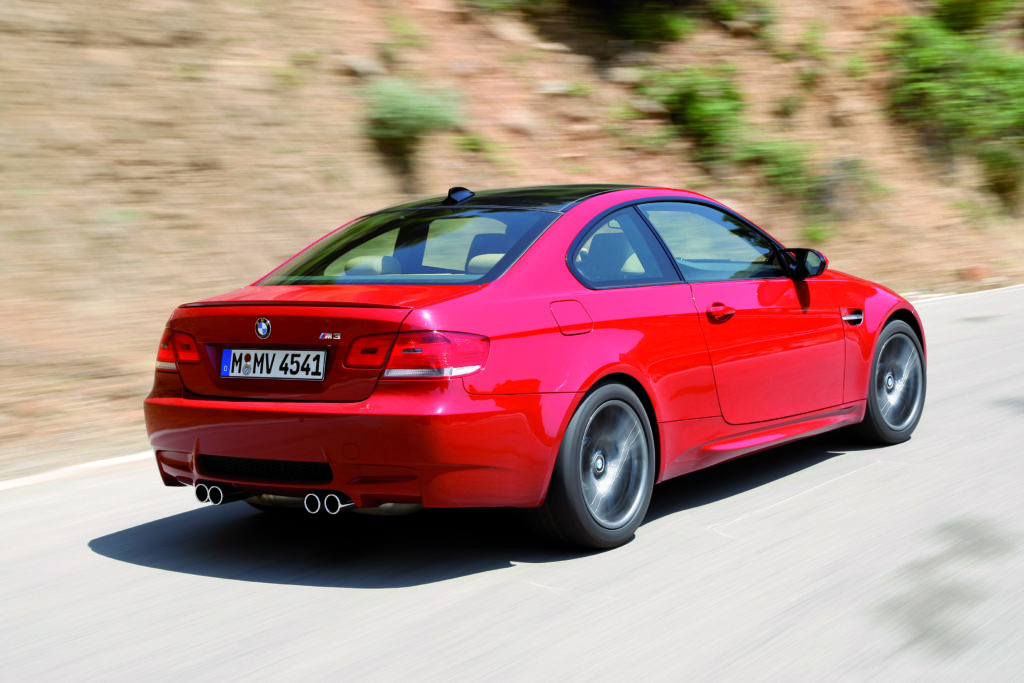
The E92 M3 and it’s sedan and convertible stablemates rank near the top of this list because of their excellent all around capability combined with a truly exceptional drivetrain. The engine is the S65B40, which uses an underlying architecture heavily derived from the S85 V10 of the E60 M5. Both engines use technologies pioneered on the previously mentioned S62, but things seemed to culminate with the razor-sharp S65 that powered the M3 for model years 2008 through 2013. Although some of the technology is aging, prices of E9X platform M3’s have reached an excellent stage in their longterm depreciation curve, where the cars are old enough to be relatively inexpensive while still eligible for cost-effective third-party warranty coverage. What’s more is that going forward, we’re unlikely to see anything quite like the M3 and it’s race-bred V8 again, and before we know it, prices could once again be on the rise.
Despite sharing the same design as the S85, the S65 is even more incredible when the numbers are considered. The redline for the 32-valve, DOHC V8 is a sky-high 8,400 rpm, while the same ionic current sensing and double VANOS are also used. Compression is remarkably high for a production road car engine at 12.0:1, and weight tips the scales at 33 pounds less than the S54. An oil scavenging system is also used for high-G cornering, and output when new was 414 hp at 8,300 rpm with 300 lb. ft. of torque arriving at 3,900. Like the S62 before it, the S65 proved a viable racing platform, and saw use in a 4.4-liter variant developed from the unit for the M3 GTS and CRT that was fitted to memorable grid competitors like the Z4 GT3 and M3 GTR.
1. E46 M3
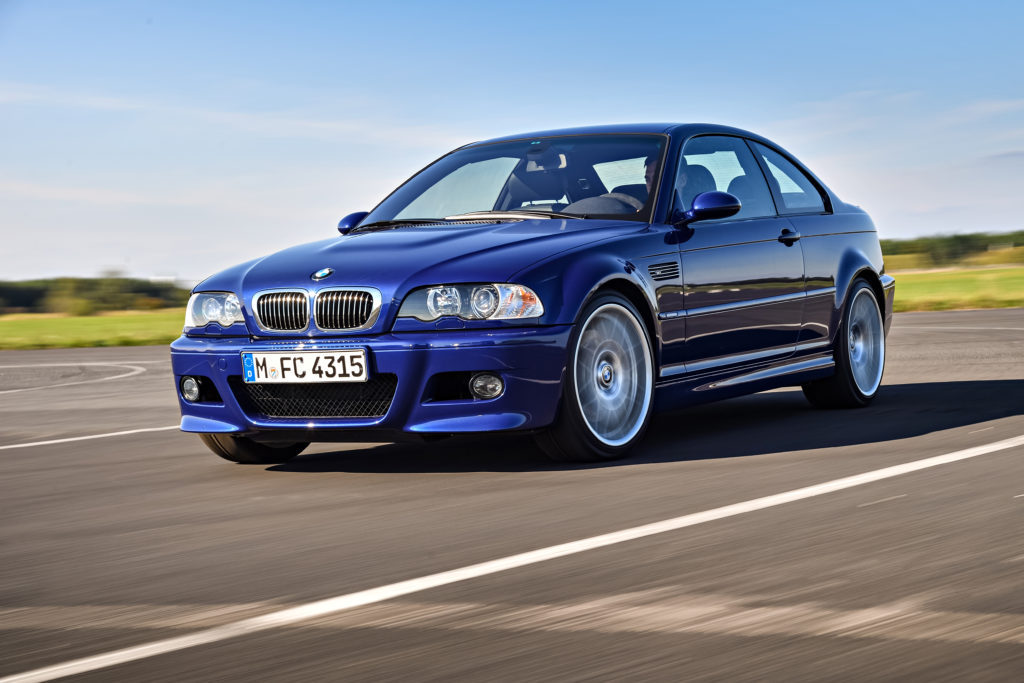
You had to know it was coming. The E46 M3 easily tops this list for a number of reasons, some of the most obvious including the model’s impact on the brand. Sold during and after the E39 put the M5 on the map as a household name, the third-generation M3 is the type of car that enthusiasts are still becoming enamored with some seventeen years after its initial introduction. An excellent all-around package, the M3 took the evolved styling of the E46 3 Series and gave it flared fenders, a wider track and an aggressive quad-exhaust on the rear end that clearly set it apart from other stablemates and cars in general. As time has gone on, many people seem to arrive at a conclusion that suggests BMW peaked around this period, in terms of reserved, understated styling and racing-grade engines that took feats of engineering to make reasonably reliable in road cars.
While some cite the wide body as where BMW started to go wrong in comparison to the E36 which shared panels with the standard three, others view it as the most perfect embodiment as the ultimate driving machine. Subjective matters like styling and feel aside, it’s the engine of the E46 M3 that’s capable of ending arguments between enthusiasts. Built during the era that saw other excellent power plants which appear on this list, the S54 is widely regarded as the absolute pinnacle of the naturally aspirated BMW inline six and entire atmospheric engine lineup. Packing a stratospherically high 8,000 rpm redline, the S54B32 produces 333 hp at 7,900 revs with torque of 269 lb. ft. peaking at 4,900. Double VANOS and individual throttle bodies help achieve these impressive numbers, which put the engine among others that bested the 100 hp per liter threshold. If you really want to get technical though, consider the S54’s piston velocity at redline which is 4,773.33 feet per minute. By this metric, the S54’s engine is even more remarkable than that of the Carrera GT (~4,200 feet per minute), McLaren F1 or Pagani Zonda (~4,300), or Ferrari 360 Modena (~4,400), bested only by the Lamborghini Gallardo (~4,900) and a few very respectable four cylinder competitors from Honda like the 9,000 rpm capable F20C of the S2000 (~5,000). Opening things up with a CSL-style air box and proper exhaust allows the high-strung engine to breath properly, and also enables the full aural experience.
Stay tuned for more compilations and lists going forward on even more compelling criteria. —Alex Tock
[Photos courtesy of BMW AG, Alex Tock.]

